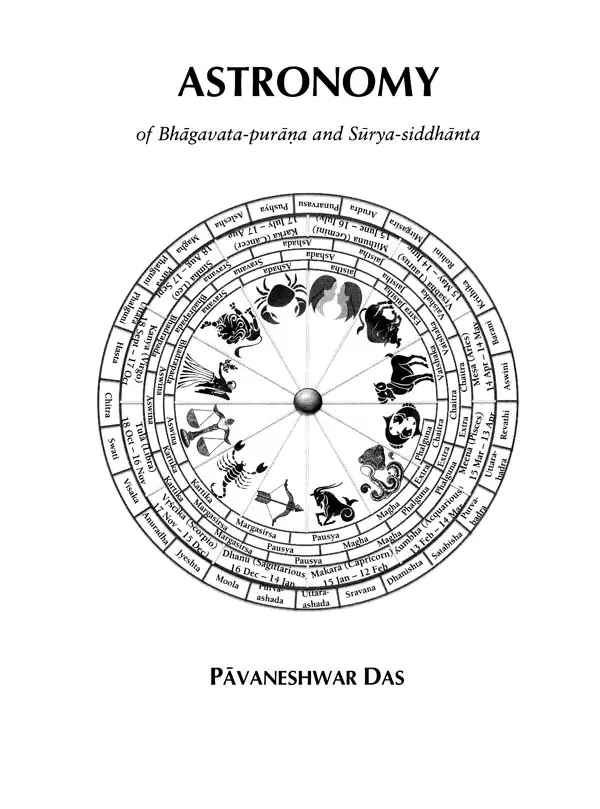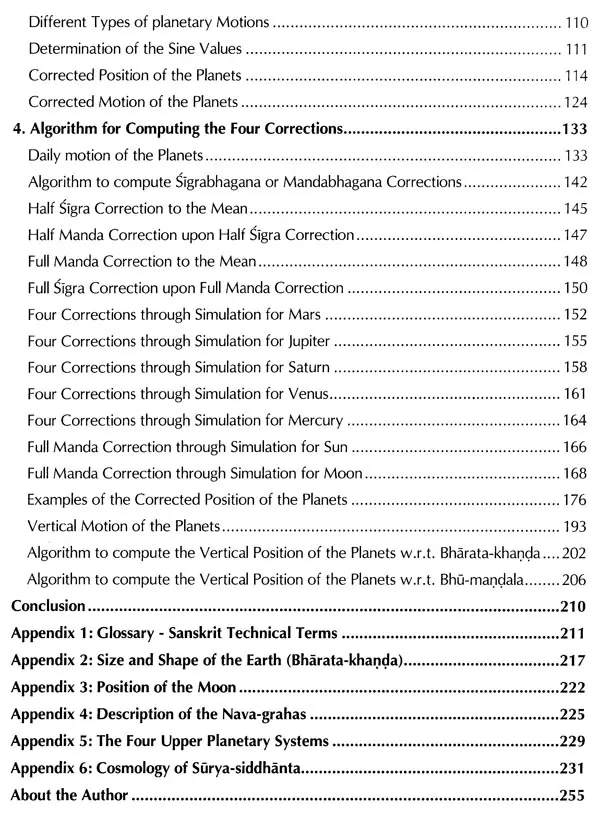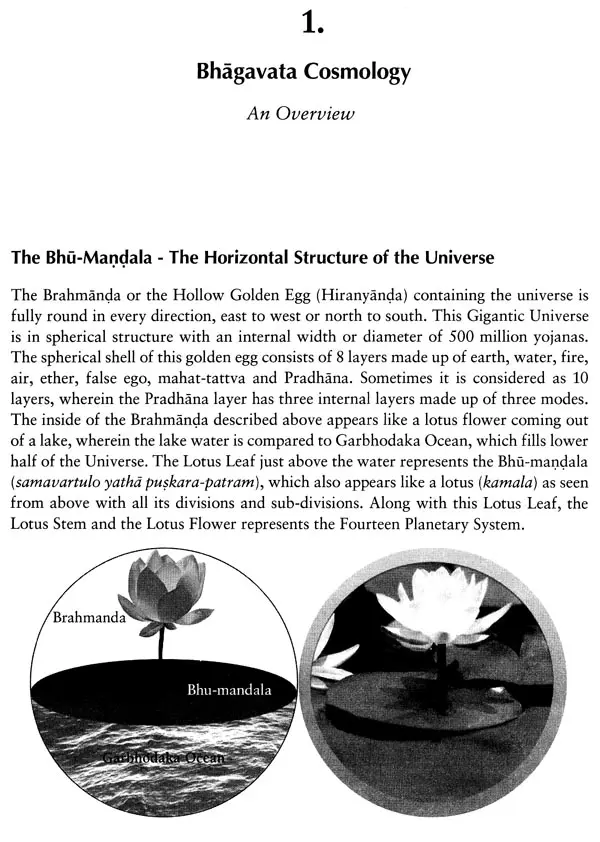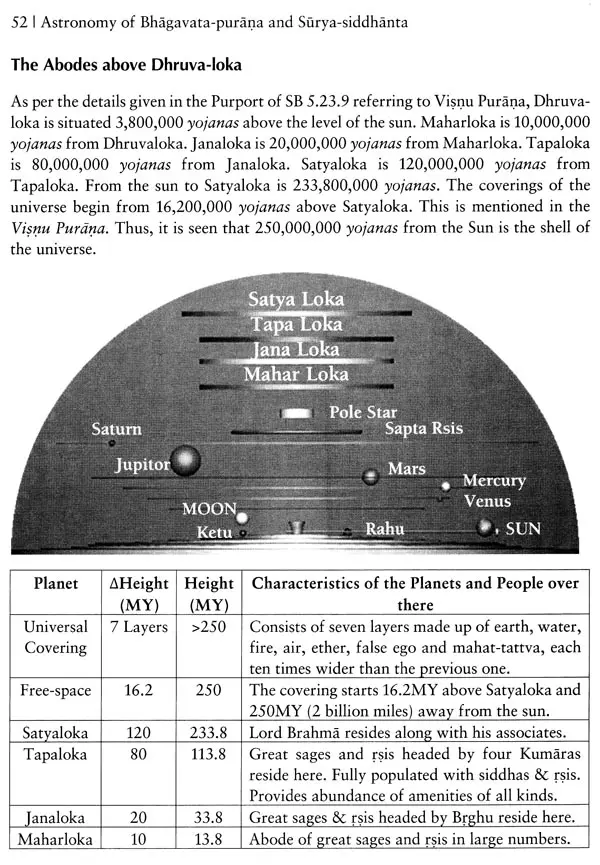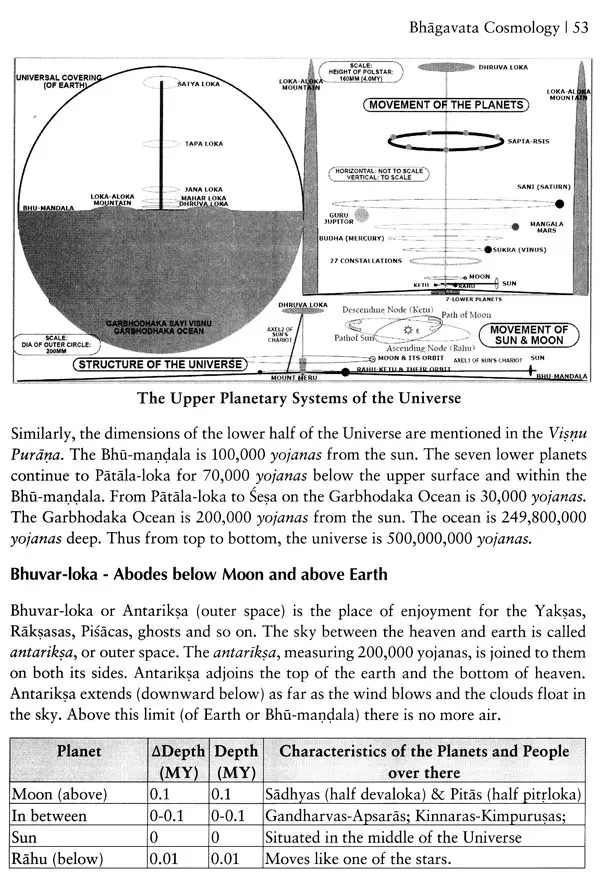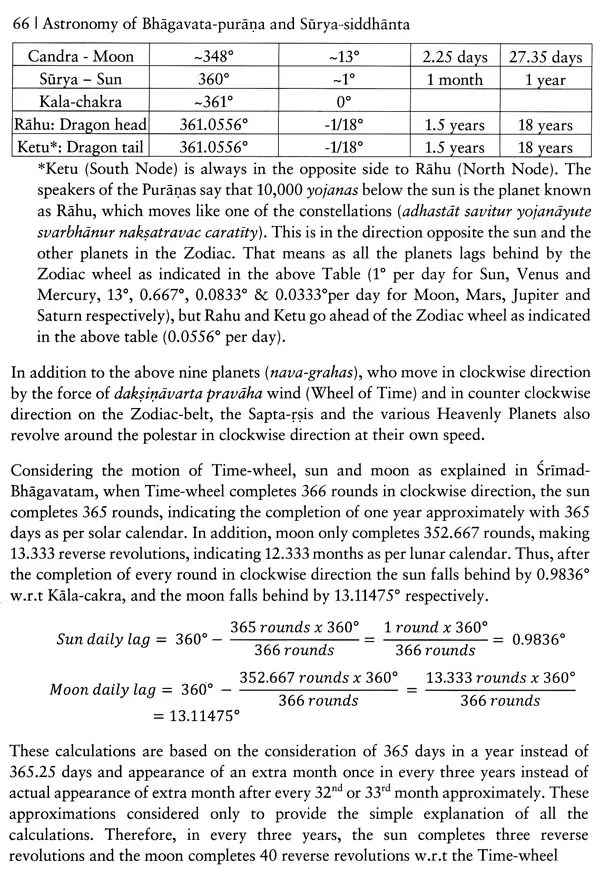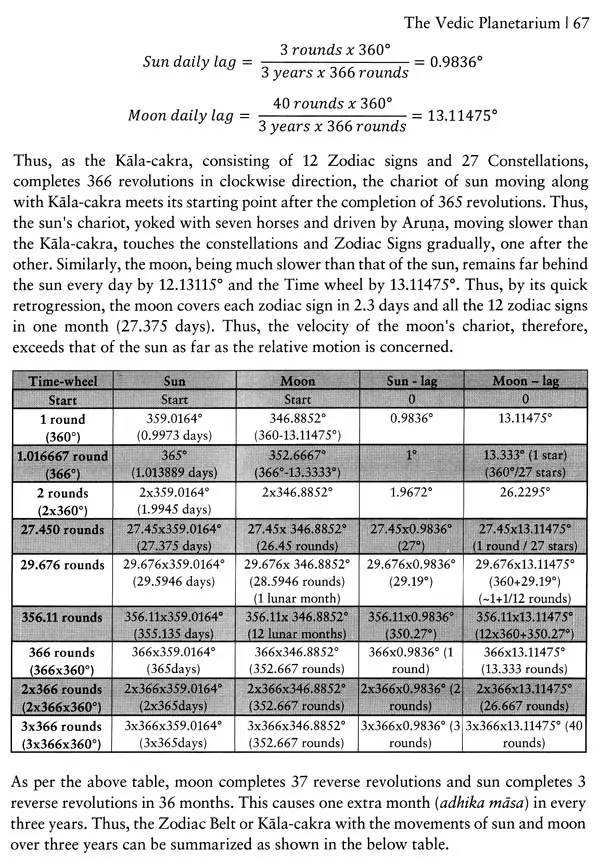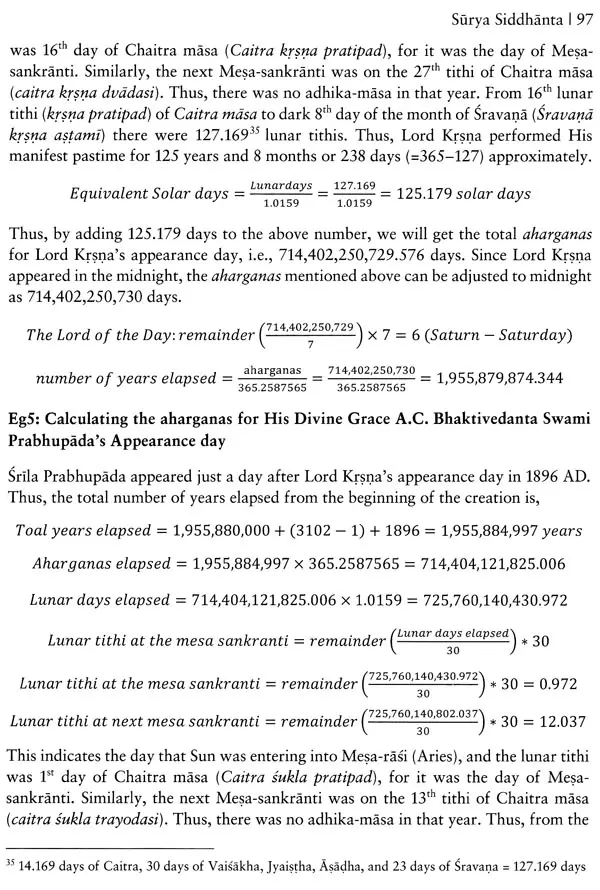
Astronomy of Bhagavata-Purana and Surya-Siddhanta
Book Specification
| Item Code: | UBB888 |
| Author: | Pavaneshwar Das |
| Publisher: | Tulsi Books |
| Language: | English |
| Edition: | 2022 |
| ISBN: | 9789381283936 |
| Pages: | 253 (B/W Illustrations) |
| Cover: | PAPERBACK |
| Other Details | 9.50 X 7.00 inch |
| Weight | 500 gm |
Book Description
Sri Surya-siddhanta is acclaimed throughout India as the base-text for the traditional Hindu mathematical astronomy. Nearly all calendars (pancangas) of India and hence all our daily religious works are based on the mathematical calculations described in it. This book presents the calculations given in the first two chapters of the Sri Surya-Siddhanta quoting various examples. As an example it presents the calculations for determining the positions of the planets at the time of Lord Sri Caitanya Mahaprabhu's Appearance day and time.
His Divine Grace A.C. Bhaktivedanta Swami Srila Prabhupada, founder acarya of the International Society for Krishna Consciousness, instructed his followers to construct a Vedic Planetarium, a temple for understanding the origin, structure and function of our Universe. His desire was to build the Temple of Vedic Planetarium (TOVP) as per the descriptions of Srimad Bhagavatam and the other ancient scriptures.
Previously the book entitled as "Bhagavata Cosmology" was published, which was a result of a project that was undertaken during a two-year curriculum at Bhaktivedanta Vidyapitha. The book "Bhagavata Cosmology" contained information primarily from Srimad Bhagavatam and from the commentaries of acaryas on Srimad-Bhagavatam. It also contained information from Bhugola Varnanam of Srila Vadiraja Tirtha and Puranic Cosmology (which contains translations for the cosmology related section from Vayu Purana, Visnu Purana and Linga Purana) published by His Holiness Danavir Gosvami Maharaja. The project work during the two-year curriculum at Bhaktivedanta Vidyapitha also resulted in a small scale 3-D working model explaining the structure and the principle of operation of the Universe in a generic sense.
The four Vedas with its six angas, mimamsa, nyaya, dharma-sastras and puranas are considered the fourteen types of knowledge. (Visnu Purana 3.6.28) The four Vedas are the Rg Veda, Yajur Veda, Sama Veda and Atharva Veda. And the six Vedangas are Siksa (pronunciation), Vyakarana (grammar), Nirukta (meaning), Chanda (meter), Jyotisa (astronomy and astrology), and Kalpa (ritual). Mimamsa refers to karma-mimansa doctrine or purva-mimansa. Nyaya can refer to Brahma Sutras, or Gautama's Nyaya, or logic in general. Elsewhere in the scriptures it is said that the Vedas contain eighteen types of knowledge, including the four Upavedas.
The eighteen scriptures are the Rg, Yajus, Sama and Arthava Vedas, the Puranas, sciptures on logic, Mimamsa, dharma-dastras, siksa (pronunciation), kalpa (rules for ritual), vyakarana (grammar), nirukta (etyiomology), jyotisa (astronomy), chandas (meter), dyur-veda (medicine), dhanur-veda (military arts), gandharva-veda (music) and artha-sastra (politics) or sthapatya (architectur).
**Contents and Sample Pages**
